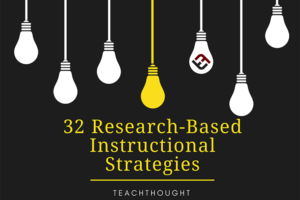
The Brand Power of Licensing
For many colleges and universities, licensed merchandise has long been a quiet but steady source of revenue and brand visibility. From sweatshirts and baseball caps to water bottles and notebooks, these products not only generate income but also serve as walking billboards that boost school spirit and brand recognition far beyond campus.
But lately, there’s been a shift. Higher ed marketers should be paying close attention to what’s happening in the licensing space, because the early warning signs of disruption are already here.
Tariffs and Canceled Orders: A Brewing Storm
Recent increases and uncertainty regarding tariffs on imported goods are driving up pricing for licensees to manufacture and import collegiate merchandise. With rising material, shipping and import costs, many licensees are reassessing their strategies. Some are choosing to cancel or reduce purchase orders, pulling back on riskier bets or deprioritizing smaller-volume schools in favor of top-tier brands with national visibility. Some are choosing to completely rebuild their supply chains, which involves changing product offerings, factory partners and source nations. Smaller-volume schools necessarily will be cut from some offerings as supply chains are rebuilt.
For institutions outside the Power Four athletic conferences, that means your branded products may no longer be showing up on some store shelves for a while or may be offered in significantly reduced volume. Even for larger schools, the financial strain on licensees and the changes they need to make could lead to diminished SKU/style offerings, fewer special collections, slower product refreshes and reorders, and less innovation.
The Impact on Brand Visibility and Affinity
This isn’t just a revenue issue; it’s a brand issue. Licensed merchandise is one of the few marketing channels that turn fans, alumni and students into ambassadors. Today’s prospective students are tomorrow’s student body and future alumni and lifetime fans. When a fan or parent wears your school’s hoodie to the grocery store or a high school senior sees your logo in a retail window, that visibility reinforces your institution’s cultural presence.
If fewer products are being made or if those products aren’t showing up in physical and digital storefronts, your brand presence shrinks. That affects more than just sales; it influences how connected your audience feels to your institution and has downstream negative impacts on enrollment, community involvement, donations and athletic support. These supply chain and licensee challenges are coming on the heels of significant COVID-related upheavals and before an anticipated nationwide enrollment cliff related to shrinking high school population.
Why Marketing Leaders Should Get Involved
Traditionally, licensing may live under auxiliary services or a separate business office. But as marketing leaders, we should be partnering more closely with licensing teams to ensure we have a full picture of how our brand is performing in the marketplace.
Here are three steps marketing leaders can take now to mitigate the impact of this changing landscape.
- Re-Engage With Your Licensing Team
Ask for a performance snapshot: How have royalties trended? Are specific categories, like youth apparel, tailgating gear or alumni merchandise, down or up more than others? What are your top-selling or worst-performing licensees and SKUs? Are there any retail partners you could work with to broaden their selection of licensed products?
- Evaluate Your Licensee Mix and Sourcing Strategy
Encourage conversations about domestic sourcing options and alternative manufacturers with domestic production. If one of your primary partners is pulling back due to tariffs, there may be smaller or niche partners who are better equipped to weather the storm and innovate in response.
- Activate Your Community Through Storytelling
If retail sales are contracting, consider how your marketing team can help drive traffic to official online stores or promote domestic-sourced direct-to-consumer efforts. Strategic storytelling such as featuring alumni-owned or local licensees or highlighting sustainable merchandise can align with institutional values while boosting sales.
A Moment for Brand Resilience
In higher ed, we often talk about resilience in terms of enrollment, endowment or curriculum. But brand resilience matters, too, and licensing is a key part of that equation. As market conditions tighten, schools that stay actively involved in their licensing strategy will have an advantage—not just financially, but reputationally.
Now is the time to treat your licensing portfolio not as a passive revenue stream but as an extension of your brand strategy. The marketers who do will be best positioned to navigate the challenges ahead and emerge stronger.
Source link



